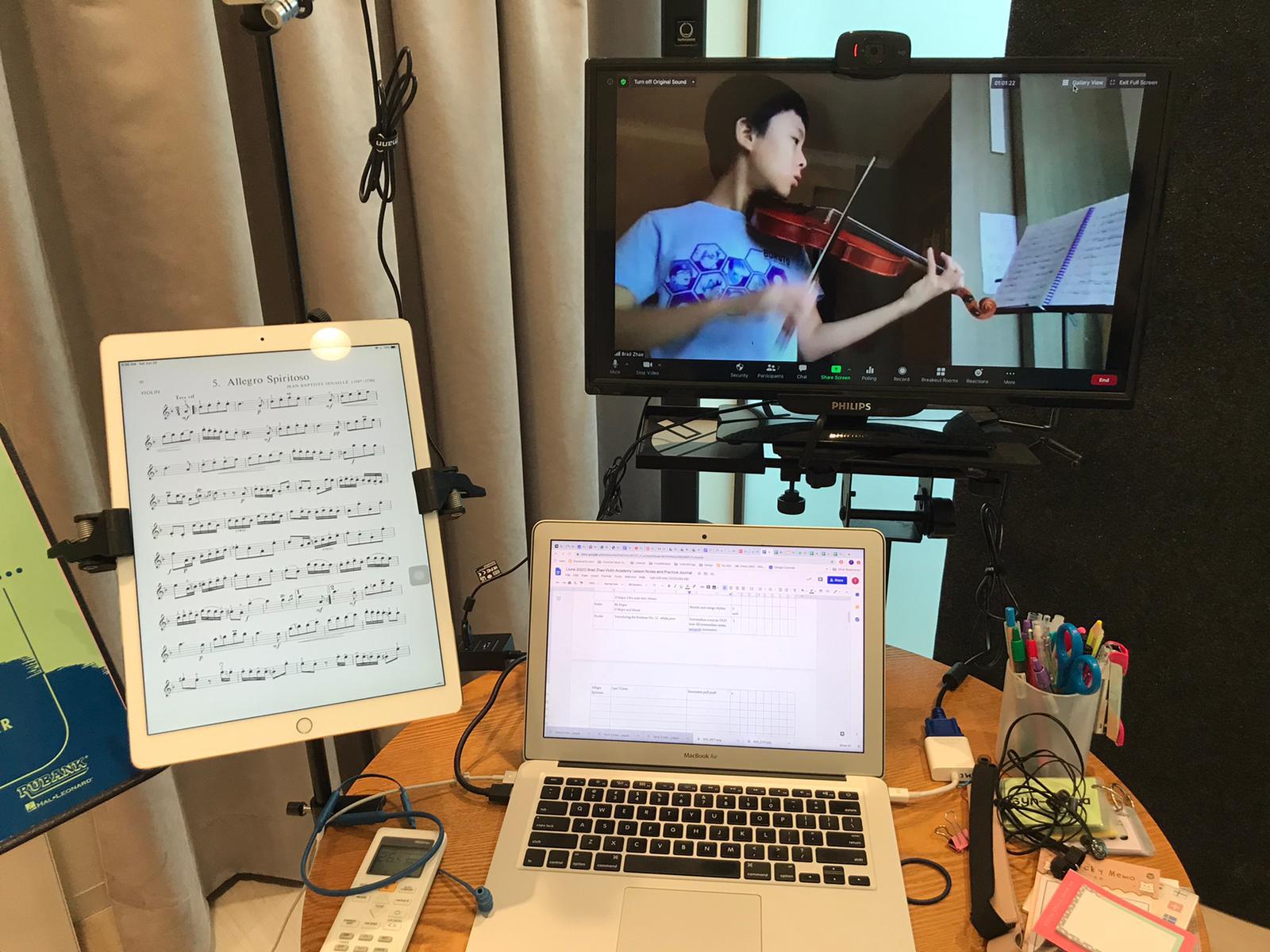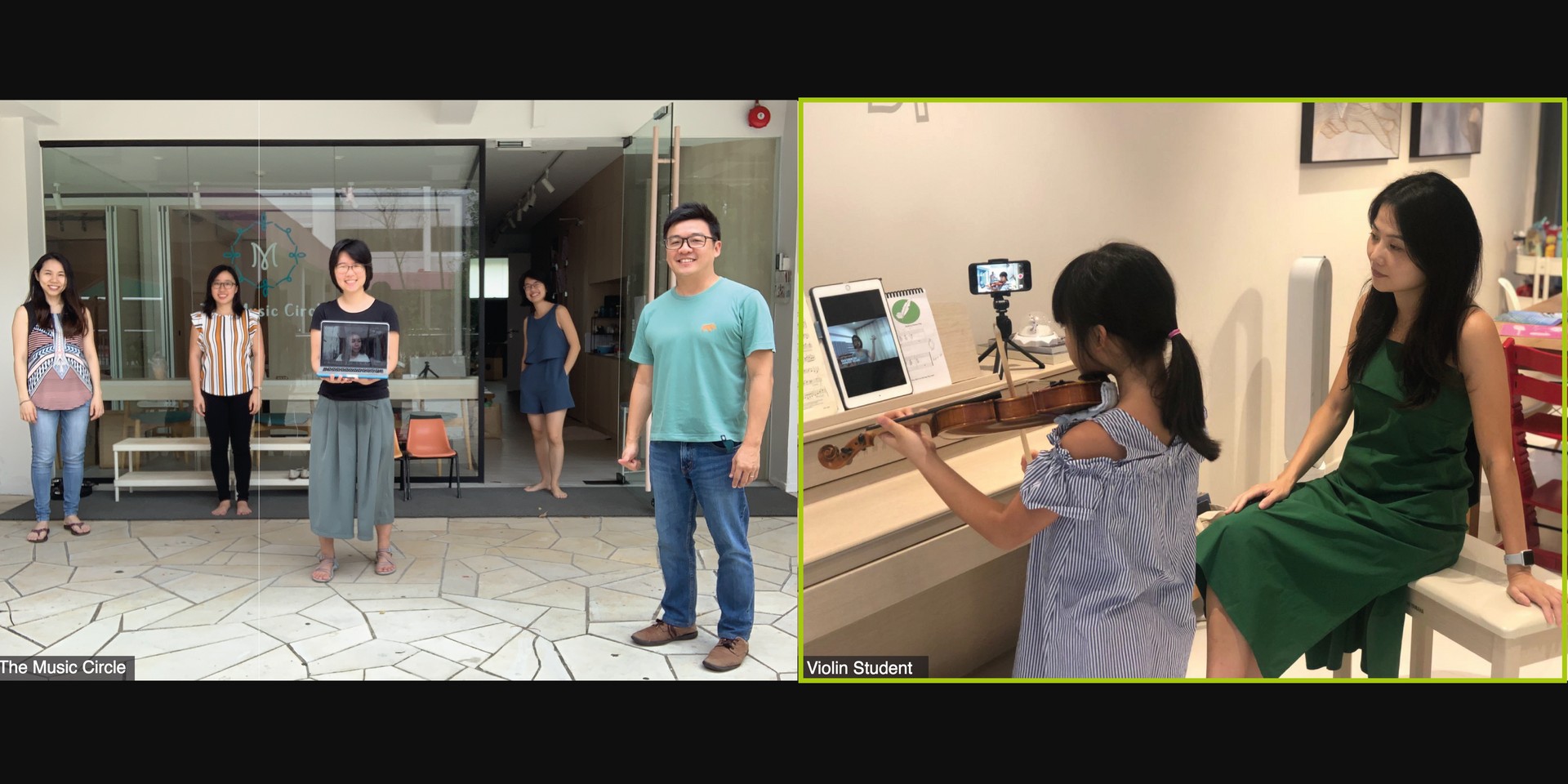Step aside Zoomers, these kids and their music teachers deserve the title as much as you. With the closure of schools and tuition centres during the COVID-19 Circuit Breaker and Phase 1 periods in Singapore, music schools offering instrumental lessons saw no exception.
Singapore-based music school, The Music Circle, pivoted quickly to allow lessons to continue virtually. Using a mix of cloud-based notation software, interactive illustration tools, and working with parents to adjust their children to a new environment for learning, group classes and music camps were able to be translated digitally.

Bandwagon caught up with The Music Circle's Clarence Yap, co-founder and general manager and Dr. Tang Tee Tong, artistic director of The Music Circle, who shared with us how their digital instrumental lessons were like.
Tell us about how The Music Circle was impacted by COVID-19.
Clarence: Our biggest challenge came from keeping the sense of community among our students, their families, and our teachers, as this community has been at the heart of The Music Circle’s idea.
When moving online, we had to rethink some of our lesson formats and materials and consider what worked in the context of the student being at home looking at a screen. Losing the proximity also meant that we had to think about how to what angles to position the respective cameras.
Performance and events are also central to our community, and we had to cancel our mid-year student showcase concert. Instead, we had a series of smaller-scale student performance classes online within the respective academies.
Here's how our violin ensemble class looks like on the screen:

What are some practical challenges that the music school faced in executing online lessons?
Clarence: Operating in the online environment, we are dependent on good signal speeds and bandwidth! We can get all the best equipment, but there will be moments out of our control, such as when either party experiences lag, or when the signal drops altogether.
For instrumental classes, being in the same room enables the teacher to help the student with their physical set up and also catching the fine details in their movements because we see limited angles. It’s also trickier for the teacher to play together with the student because of some audio lags.
How did the process of transitioning to online music lessons look like?
Dr. Tang: We spent time training the teachers on how to use the Zoom platform, and we collectively started experimenting with different ways we could use the multimedia features. We decided to use zoom because of the features that enabled us to share our screens with students, which is essential since Teachers are able to share scribbles on the scores with students or scores. Breakout rooms also enabled us to engage them in smaller groups.
We also invested in gear that would help us deliver the best audio-visual experience possible. All teachers were equipped with good microphones, LAN cables and adapters, as well as clamps and stands for their cameras. We figured out how to use multiple screens - iPad for scores, monitor for watching students play, and a laptop for practice journals as well as to share any other materials like videos, so we were all geared up!

What were some new tools that were used to facilitate learning while being physically apart from the students?
Dr. Tang: We brought the entire academy online, finding digital alternatives for what would normally be our physical resources. It was a great time to explore the plethora of online resources for music as well, learning to use musical notation software online to notate rhythms, scales, musical excerpts for aural training, with Flat for Docs, Noteflight, and Chrome Music Lab. Antfarm was also used as a notation software for students to record themselves and annotate comments. The teacher will be able to review the recordings and give comments which can be further reviewed during lessons.
Flat for Docs makes it easy to add musical snippets into Google Docs or Slides without using an external music notation software:

Chrome Music Lab has a range of music-making stations - compose a melody on a virtual loop station, 'play' the drums, strings, and a bunch of instruments that you cannot find in your bedroom on the Song Maker.
On holding a holiday camp online for students:
Dr. Tang: We also run camps twice a year for our students, which they really enjoy and forge many friendships there. We decided to press ahead with an online camp in the May holidays, though we’ve never run a camp online before. We were worried about whether we could keep them engaged over a few days and whether they’d even bother to participate. In the end, we had close to 30 children participating and we were so encouraged by how participative they were.
We had a mixture of lectures, quizzes, storytelling, games, and competitions. To keep them engaged over the three days of camp, we kept the duration of each activity short. It was just over two hours a day, compared to the 8-hour affairs we would normally do.

What were some new advantages of doing digital lessons?
Dr. Tang: One advantage of Home-Based Learning is that teachers get to see the child’s practice set up, so they can help them adjust anything that’s less than ideal, like finding out so many kids have music stands that are not functioning! Since the student is in their home environment, we got them to share some of their things at home, like soft toys and pets which helps teachers get to know them better.
What role did the parents play in making online music lessons a success?
Clarence: We worked together with the parents to configure the devices, software settings as well as finding the best angles when we first started setting up for classes. Parents of our younger instrumental students were supportive and involved during lessons, helping to adjust fingers or point to the score. In fact, this was a great time for families to play music together. Many parents stepped up to accompany their kids and several started exploring playing and singing together as a family activity.

How do you see this segment of the industry going forward?
Clarence: We see this as a great lesson in terms of the opportunity we had to deliver music education virtually. Doing lessons online allows one to overcome geographical and commuting constraints, and have proven to be effective and straightforward. We are certainly looking into what we can do online in the new norm, even past the pandemic situation.
Going through this also shifts mindsets and I believe there will be more people who will be keen on taking advantage of having more online learning, so it opens up a lot of possibilities for us if we can find ways to complement and expand our music education offering with digital lessons.
Now in Phase 2 where the music school is allowed to re-open, online lessons are still an option for parents who prefer for their children to practice social distancing. Having built up a viable system over the past few months, digital lessons have now become the norm that we foresee will continue until the pandemic blows over.
Like what you read? Show our writer some love!
-

